WE WERE IMPRESSED WITH THE MURIWAI GANNET COLONY in 2005 when we were fledgling birders and we were just as impressed on Saturday. Hundreds of gannets who call Muriwai home covered the cliffs and the tops of two sea stacks just offshore while others soared over the surfers below.
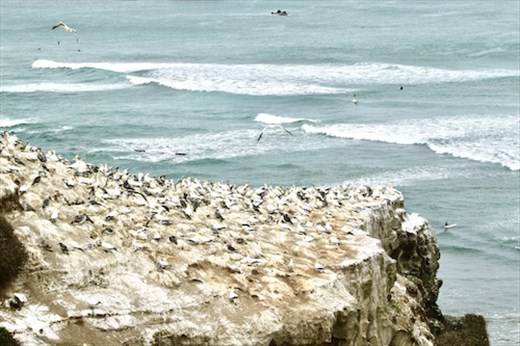
Nesting space is always at a premium
Gannets — Maukatia Takapu to the locals — are elegant birds. Adults are about the size of a goose with a two-meter wingspan. Adults have golden heads, snow white bodies and improbably green-veined feet. All three gannet species are believed to be monogamous. They can live for 30 years and they mate for life. Even mature couples keep their love alive with pair-bonding rituals. Maybe if human couples spent more time dancing our marital track record would be better.
Just sayin’.
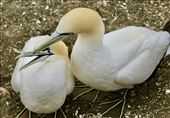
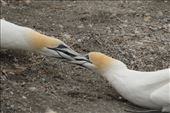
A Surprise Gift Keeping love alive
Three-quarters of all Australasian Gannets mate and breed in New Zealand in places like Muriwai. Males and females alternate incubating a single blue egg for 43 days then spend the rest of the time feeding their greedy offspring. The fluffy chicks grow quickly and their down is replaced during their second or third month when they weigh 3 kilograms, half a kilo more than their parents! About this time they begin flapping their wings for hours each a day, gaining strength for eventual flight but never leaving the ground intentionally. We’ve seen a breeze lift them unexpectedly while they are exercising and I swear they have a surprised expression on their face.
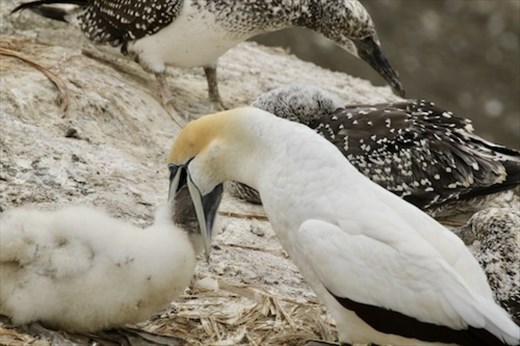
Feeding time. Chicks soon weigh more than their folks
When they reach four months they will fly away, not to return for several years. With no previous flight experience, without ever having to feed themselves and with no adults to guide them, the still chubby birds fly 2700 kilometers across the Tasman Sea to the east coast of Australia, a journey that takes from one to two weeks. Two or three years later they will return to their birthplace, if they are among the quarter lucky enough to make the two-way journey. Then it may take a year or two to find a nest site and a mate on the crowded hillside, but the lucky will stay — most adult birds don’t migrate again — and raise a family.
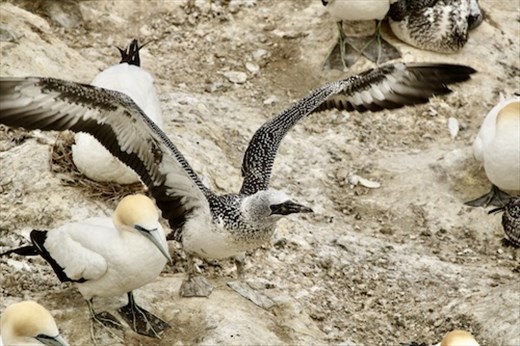
Gotta pump up for the flight
Gannets are wonderful flyers. They cruise the coastline searching for schools of fish or squid, then plunge like arrows into the water. Just before they hit the surface they fold in their wings and dive deep below their prey. We’ve seen dozens of northern gannets trailing bubbles down several feet as they chase their prey. Hitting the water at 145km/h (90mph) should be fatal to the birds but inflatable air sacs around the neck and chest absorb the shock like built in airbags.
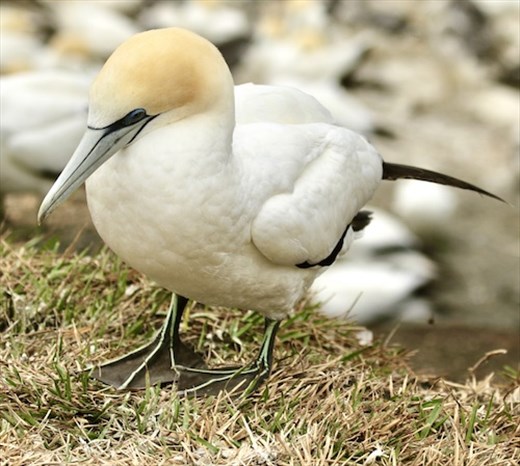
Colorful Gannet
Muriwai has about 1200 gannets, some courting, others pair-bonding, feeding chicks or practicing flight. There are squabbles for territory and mates, general squawking and bonding rituals. Just follow the smell of bird poo. It’s a sight you won’t soon forget.